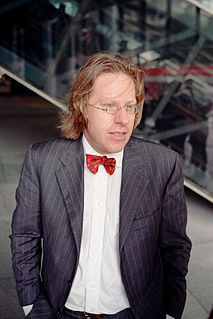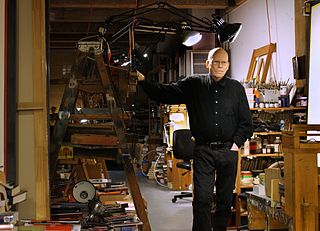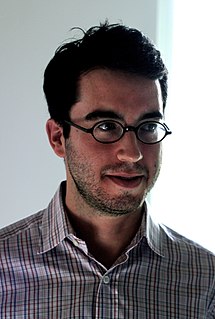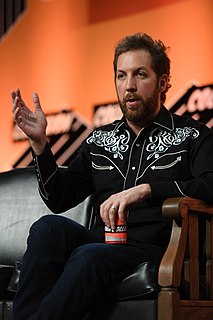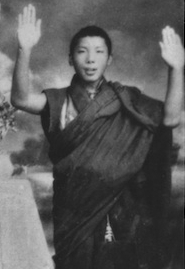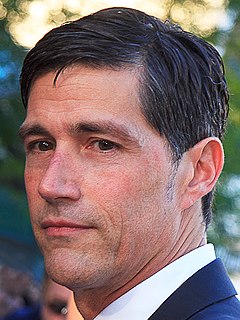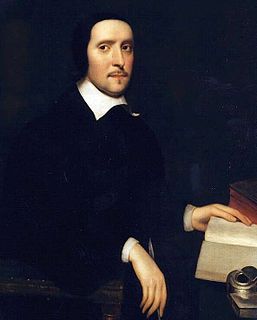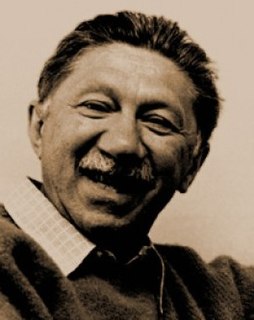Top 278 Buckminster Fuller Quotes & Sayings
Explore popular Buckminster Fuller quotes.
Last updated on November 26, 2024.
Just enough of that to be able to give the reader a sense of skepticism that all - it seemed like all that was necessary. I don't really care. But what I do care about is what was happening within the realm of automobiles at the time that [Buckminster Fuller] invented his Dymaxion car because that is really relevant.
[Buckminster Fuller] started talking about it far enough afterwards, an audience that was far enough from when they - when the air flow and the Zephyr and these cars in the time period that were made by mainstream automakers. It was far enough in the future, far enough after that point that nobody really bothered to fact-check.
Once you start backing into all of that, then you see this incredibly intricate, totally wrong-headed way to do things, but nevertheless has a lot of merit to it for the fact that [Buckminster Fuller] is recognizing much larger patterns, seeking much larger patterns and seeking much larger ways of trying to solve for the problem of unhygienic conditions in slums. They really were unhygienic. Whether his family was living in the slum is debatable but they were unhygienic. That needed to be addressed. He was attempting to address it.
My work is very eclectic. I write books that range from writing fiction, writing fable where I am very directly trying to imagine alternate worlds, to writing about [Buckminster] Fuller who was the ultimate world man creating all sorts of alternate worlds and believing that they were imminent to my own work of - for instance, a project that I've been working on for some year and a half, two years now that continues to evolve has been what I call Deep Time Photography.
Buckminster Fuller himself was fond of stating that what seems to be happening at the moment is never the full story of what is really going on. He liked to point out that for the honey bee, it is the honey that is important. But the bee is at the same time nature's vehicle for carrying out cross-pollination of the flowers. Interconnectedness is a fundamental principle of nature. Nothing is isolated. Each event connects with others.
[Buckminster] Fuller's idea of progress is a very 1950s organization man out of the military sort of idea of progress. So as a result, you have something like: we've got bad weather in New York City; let's put a dome over it. And so I don't want to put a dome over Manhattan and I hope that nobody who ends up reading the book wants to do so as a result.
Writing a book about [Buckminster Fuller] in the sense of deciding how much to - how much biographically to gloss over and how much I can leave out is relatively easy as it is because the true believers already know everything. They know a lot of things that are not true and they know a lot of things that I thought were (and seems there's very good evidence not to believe) and therefore, my starting point was I think to tell his myth because that's what grabbed me.
I said, "Well, why do you believe in the Klein Bottle?" He said, "Because I can imagine it." I said, "You don't have to imagine a Mobius strip. It's right there in front of you!" But [Buckminster Fuller] couldn't see how that could involve a cross cap, meaning something that couldn't be reduced to a two-dimensional surface. Which it does. It's because he was thinking that the matrix was the thing that a fly could walk over the edge of, like a torus.
I didn't grow up with [Buckminster Fuller]. I never met him. I was once close to meeting him as a child at a ski resort one summer. He died in 1983. Only in 1999 or so, 2000, when I was working as an editor at San Francisco Magazine, did I really come back around to that name because Stanford University had just acquired the archive.
Buckminster Fuller was down in Pennsylvania, then he'd come up and go to his island in Maine. He wanted to remain a New Englander. He taught from '48 to '49 and '50 at Black Mountain College. That's where he met Kenneth Snelson. Fuller kind of stayed a Yankee right in the New England area. So it was pretty easy to get him to come on over, and we would have lectures at the Harvard Science Center.
We would go on retreats to Florence. The people in the planning team got to be good friends and so we did things like, we'd all go over to the Fort Belvedere in Florence and take that thing over. Because it's up for grabs, you can rent it. And then have New Age meetings and all that kind of stuff. [Buckminster] Fuller loved to go there.
Although the warrior's life is dedicated to helping others, he realizes that he will never be able to completely share his experience with others...Yet he is more and more in love with the world. That combination of love affair and loneliness is what enables the warrior to constantly reach out to help others. By renouncing his private world, the warrior discovers a greater universe and a fuller and fuller broken heart. This is not something to feel bad about; it is a cause for rejoicing.
I think that surprisingly few people right now know much about [Buckminster] Fuller beyond the few really iconic points. He invented the geodesic dome and he coined the term "spaceship earth" and that's pretty much the extent of what people who even have heard of him know. And I'm struck by how many people have not heard of him at all.
Political movements for justice are part of the fuller development of the cosmos, and nature is the matrix in which humans come to their self-awareness of their power to transform. Liberation movements are a fuller development of the cosmos's sense of harmony, balance, justice, and celebration. This is why true spiritual liberation demands rituals of cosmic celebrating and healing, which will in turn culminate in personal transformation and liberation.
I think that in the first place, why we can get excited about [Buckminster ] Fuller, why it's plausible that people might - why my publisher would publish this book [You belong to the universe] about it long after he's dead and irrelevant by many standards has to do with the fact that he was in a sense coming up with this job for himself that is the job that we now refer to when we speak about world change.
Architects in urban planning are talking about this but they're not talking about it yet I don't think at that level that [Buckminster] Fuller is talking about when he talked about putting a dome over Manhattan, which is to say an attempt at integrating all of these different technologies in a way that makes for a city that, without having an actual dome, thermodynamically manages the heat flow for that urban environment and therefore makes it so that it is a highly efficient machine for a living or a dwelling machine as he would have preferred in terms of thermodynamically optimizing it.
[Buckminster Fuller ] never got past his freshman year [in Harvard], because the guy was an insane womanizer and he did parties every night, never studied anything, never took a note, didn't care about anything and just had a blast. So they said, "We gotta let you go. You get zeros all the time." Today it wouldn't even matter, because they don't care if you can read.
When I first went to Georgia Championship Wrestling, the promoter at the time Jim Barnett brought in Robert Fuller, who later became Colonel Rob Parker in WCW, as the booker. Everybody has their own style and way of doing things, and I was just not impressed with Robert Fuller. As a booker. As a talent he was fine.
Marriage hath in it less of beauty but more of safety, than the single life; it hath more care, but less danger, it is more merry, and more sad; it is fuller of sorrows, and fuller of joys; it lies under more burdens, but it is supported by all the strengths of love and charity, and those burdens are delightful.
I was interested first of all in trying to capture this myth that was always changing and to create some sort of a master story, some version of the myth that resonated with me, since I could have taken more or less any detail that I wanted or the opposite and try to put that down on the page in a way that I could express from that outset for myself and for our readers what it was that was so magical about [Buckminster] Fuller's way of putting together the world.
[Buckminster Fuller] was quite willing to talk. He'd talk at the drop of a hat.I learned to talk in front of people by listening to the way he did things. Because he would give lessons in how to lecture. He would say, "Never take a note, just stand up and start babbling. And then eventually you're going to be able to make some coherent statements, and so it's like you're vamping. And then people will gradually start to listen to you when this spot of logic shows up in this torrent of verbiage.
I would have private conversations with [Buckminster Fuller]. I once had an argument, for four hours, about the existence of the Mobius strip. Because he believed in the Klein Bottle, you see. And I said, "How in hell can you claim to believe in the Klein Bottle and think that the Mobius strip is dubious?" He said, "Well, it's a torus." I don't know what he had in his mind as a mathematical background, because I don't think he got topology. Because, in other words, the Mobius strip didn't have angles in it.
On the other hand, the way in which that car fit into this whole very roundabout way of attempting to solve the problem of what - the problem that [Buckminster Fuller] perceived as being the cause of his daughter's death and meningitis. I mean how you get from your daughter dying from meningitis to making a car with three wheels and saying that it's like a bird and a fish. That really is amazing.
I spent three years there and encountered great teachers who gave me enough stimulation to last me for the rest of my life - Josef Albers, painter; Buckminster Fuller, inventor; Max Dehn, the mathematician, and many others. Through them, I came to understand the total commitment required if one must be an artist.
Sam Fuller and 'Shock Corridor' can only be conjured as a mantra. 'Shock Corridor' is a classic work of art - it's unique. It comes from the unique experience of being Sam Fuller and yes, there's always that element of 'Shock Corridor' hovering around the picture, but never specifically. In fact, I didn't even screen it because it's in us. It's in me anyway. It's in me. It was a way of conjuring up support just by saying the name, 'Shock Corridor,' as I was going to shoot. Poor Sam [Fuller]...
Just getting totally absorbed in that and therefore when I came back around to [Buckminster Fuller] and found that much of it was made up, I realized that nevertheless, it really was crucial, crucial for how he understood himself, I believe, and certainly crucial for how anyone else ever engaged in his ideas and therefore as a starting point, how can we engage in his ideas today, but with a remove of knowing that it is a myth and being able to navigate it in that sort of level, at that level of reading him as a story.

